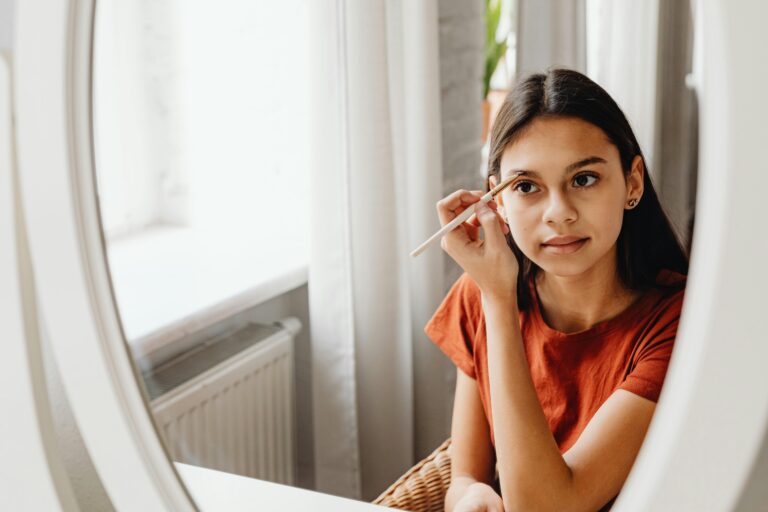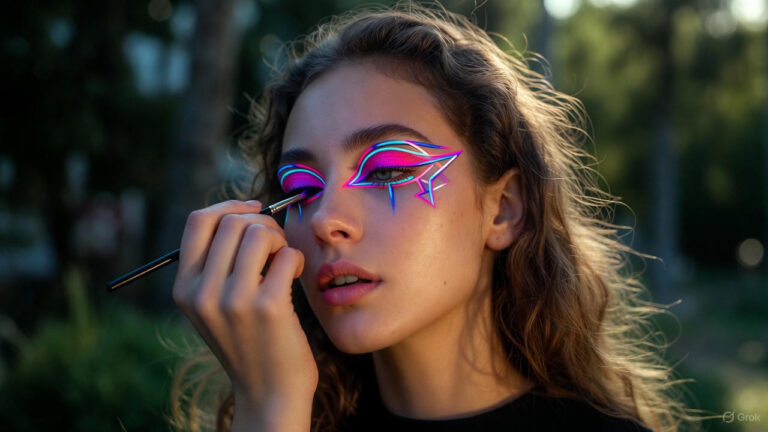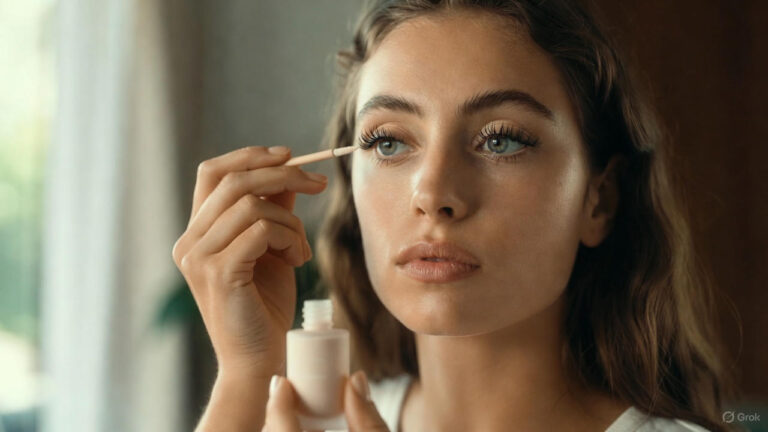Blackheads can be a persistent nuisance, appearing on our nose, chin, and forehead and affecting our complexion and confidence. These small, dark bumps are formed when pores become clogged with excess oil, dead skin cells, and dirt. However, with the right approach and consistent skincare routine, you can effectively eliminate blackheads and restore a clearer, smoother complexion.
In this article, we will explore 15 proven tips to help you get rid of blackheads on your nose, chin, and forehead, providing you with the tools to achieve healthier, blemish-free skin.
What are Blackheads?
Before diving into the tips, it’s important to understand what causes blackheads and how they differ from other forms of acne. Blackheads occur when the hair follicle becomes clogged, and the trapped material oxidizes, resulting in a black or dark appearance.
Unlike whiteheads, which are closed comedones, blackheads are open comedones and are more easily visible. They can be caused by various factors, including excessive oil production, hormonal changes, improper skincare, and environmental factors. By addressing these underlying causes and following a targeted skincare routine, you can effectively combat blackheads.
15 Proven Tips to Get Rid of Blackheads
1. Cleanse your face regularly
Regular cleansing is essential for removing excess oil, dirt, and dead skin cells that can contribute to blackheads. Opt for gentle cleansers that do not strip the skin of its natural oils. Wash your face twice daily using lukewarm water to maintain a balanced and clean complexion.
2. Exfoliate regularly
Exfoliation helps to remove dead skin cells and unclog pores, reducing the occurrence of blackheads. Choose exfoliating products with gentle, non-abrasive ingredients, such as alpha-hydroxy acids (AHAs) or beta-hydroxy acids (BHAs), which effectively exfoliate without irritating the skin. Incorporate exfoliation into your skincare routine 2-3 times a week.
3. Use pore strips
Pore strips can be a quick and effective way to remove blackheads from the nose, chin, and forehead. These adhesive strips adhere to the skin and, when removed, pull out the trapped debris from the pores. Ensure your face is clean and moist before applying the strip, and follow the instructions carefully for the best results.
4. Steam your face
Steaming your face helps to open up the pores, making it easier to remove blackheads. Fill a bowl with hot water and lean over it with a towel draped over your head to trap the steam. Steam your face for 5-10 minutes, then gently cleanse and exfoliate to remove the loosened blackheads.
5. Apply clay masks
Clay masks have absorbent properties that draw out impurities and excess oil from the pores, making them an excellent option for tackling blackheads. Look for masks containing ingredients like kaolin clay, bentonite clay, or charcoal. Apply the mask to your face, let it dry, and rinse off with warm water.
6. Try salicylic acid
Salicylic acid is a beta-hydroxy acid known for its ability to penetrate the pores and dissolve excess oil and dead skin cells. Look for cleansers, toners, or spot treatments containing salicylic acid to target blackheads specifically. Start with a lower concentration and gradually increase it if needed.
7. Use retinoids
Retinoids, derived from vitamin A, can help unclog pores, reduce oil production, and promote cell turnover, making them effective against blackheads. Incorporate a retinoid product into your skincare routine, such as a retinol serum or prescription-strength retinoid cream. Start with a low concentration and gradually increase as your skin adjusts. Remember to use sunscreen during the day, as retinoids can increase sun sensitivity.
8. Avoid oil-based cosmetics and skincare products
Oil-based products can contribute to clogged pores and blackhead formation. Opt for non-comedogenic or oil-free cosmetics, moisturizers, and sunscreen. These products are specifically formulated not to clog pores and are less likely to exacerbate blackhead problems.
9. Maintain a balanced diet
What you eat can have an impact on your skin health, including the occurrence of blackheads. Incorporate a diet rich in fruits, vegetables, and whole grains while reducing your intake of processed foods and sugary treats. Foods high in antioxidants and omega-3 fatty acids, such as berries and fatty fish, can help promote healthy skin and reduce inflammation.
10. Keep your hands off your face
Touching your face with unclean hands can transfer dirt, bacteria, and oils onto your skin, leading to clogged pores and blackheads. Break the habit of touching or picking at your face and make a conscious effort to keep your hands away. If necessary, keep hand sanitizers or facial wipes nearby for a quick clean before touching your face.
11. Use a comedone extractor
A comedone extractor is a specialized tool designed to safely and effectively remove blackheads. Before using, cleanse your face and steam it to open up the pores. Gently press the looped end of the extractor around the blackhead to apply even pressure, and then glide it across the skin to extract the debris. Cleanse your skin afterward and apply a soothing toner.
12. Try natural remedies
Several natural ingredients have properties that can help reduce blackheads. Tea tree oil, witch hazel, lemon juice, and honey are examples of natural remedies that have antibacterial, astringent, or exfoliating properties. Use these ingredients in homemade masks, toners, or spot treatments to target blackheads naturally.
13. Cleanse your makeup brushes regularly
Makeup brushes can accumulate bacteria, oil, and product residue over time, which can transfer to your skin and contribute to blackhead formation. Cleanse your brushes weekly using a gentle shampoo or brush cleanser. Rinse thoroughly and let them air dry before using them again.
14. Protect your skin from sun damage
Sun damage can worsen blackheads and lead to skin congestion. Protect your skin by applying a broad-spectrum sunscreen with an SPF of 30 or higher. Choose a lightweight, non-comedogenic formula and reapply every two hours, especially if you’re spending time outdoors.
15. Seek professional help if necessary
If blackheads persist despite your best efforts, it may be time to consult a dermatologist or skincare professional. They can assess your skin condition, recommend targeted treatments, such as chemical peels or microdermabrasion, or prescribe medications, such as topical retinoids or antibiotics if needed.
Conclusion
Getting rid of blackheads on your nose, chin, and forehead requires consistent effort and a well-rounded skincare routine. By following the 15 proven tips outlined in this article, you can effectively tackle blackheads and achieve clearer, smoother skin. Remember to cleanse and exfoliate regularly, incorporate blackhead-targeting products like pore strips, clay masks, salicylic acid, and retinoids, and make lifestyle adjustments such as avoiding oil-based products, maintaining a balanced diet, and keeping your hands off your face.
FAQs
1. Are blackheads the same as acne?
Blackheads are a form of acne, specifically known as open comedones. Unlike whiteheads, which are closed comedones, blackheads are open to the air, which causes the trapped debris to oxidize and appear dark.
2. Can I squeeze or pop blackheads?
It is generally not recommended to squeeze or pop blackheads as it can lead to skin irritation, inflammation, and potential scarring. Instead, try using alternative methods such as pore strips, clay masks, or a comedone extractor to safely remove blackheads.
3. How long does it take to get rid of blackheads?
The time it takes to get rid of blackheads can vary depending on the severity and individual factors. With consistent skincare practices, you may start to notice improvements in a few weeks. However, it’s important to maintain a regular skincare routine to prevent new blackheads from forming.
4. Can blackheads be completely eliminated?
While blackheads can be effectively treated and minimized, they may recur due to various factors. By adopting a proactive skincare routine and following the tips provided, you can significantly reduce the occurrence of blackheads and maintain a clearer complexion.
5. Can I use toothpaste to get rid of blackheads?
Using toothpaste as a blackhead treatment is not recommended. Toothpaste contains ingredients that are meant for oral hygiene, not for skincare. Applying toothpaste to the skin can cause irritation and dryness, potentially worsening the condition. It’s best to stick to skincare products specifically formulated for treating blackheads.
6. How often should I use a pore strip?
Pore strips can be used once or twice a week, depending on your skin’s tolerance. Overusing pore strips can cause skin irritation and damage, so it’s important to follow the instructions on the packaging and give your skin time to recover between uses.
7. Can diet affect blackhead formation?
While diet alone may not be the sole cause of blackheads, certain foods can contribute to skin inflammation and increased oil production, which can exacerbate the condition. It’s beneficial to maintain a balanced diet rich in fruits, vegetables, and whole grains while minimizing the consumption of processed foods and sugary treats to support overall skin health.
8. Is it necessary to use sunscreen even if I have blackheads?
Yes, it is essential to use sunscreen even if you have blackheads. Sun damage can worsen blackheads and lead to skin congestion. Look for a broad-spectrum sunscreen with an SPF of 30 or higher, and choose a lightweight, non-comedogenic formula that won’t clog your pores. Apply it daily, even on cloudy days, and reapply every two hours if you’re exposed to the sun.
9. Can hormonal changes contribute to blackheads?
Yes, hormonal changes can play a role in blackhead formation. During puberty, hormonal fluctuations can lead to increased oil production, which can clog pores and result in blackheads. Hormonal changes during menstrual cycles or pregnancy can also affect the skin and contribute to blackhead development. Maintaining a consistent skincare routine and seeking hormonal regulation, if necessary, can help manage blackheads caused by hormonal imbalances.
10. What if the blackheads persist despite trying these tips?
If blackheads persist despite your efforts, it may be beneficial to consult a dermatologist or skincare professional. They can evaluate your skin condition, provide personalized recommendations, and offer treatments such as professional extractions, chemical peels, or laser therapy to effectively eliminate stubborn blackheads. They can also address any underlying skin issues that may be contributing to blackhead formation.



